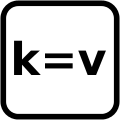User:GoodClover/Tag Format

At the core, a tag is just an ordered combination of two UTF-8 text strings, each with a max length of 255 (not 256) Unicode characters (not bytes). Keys of tags on an element must all be unique. [is there a limit on how many tags?] [could the old segments have tags?]
They are commonly represented in the format key=value.
Note that it is possible to have an equals sign in the key and value, but this is almost always an error. The same applies to leading/trailing white-space.
Values
Lists
There are many cases where you may need to have multiple values, or a list of values for a tag. Depending on the lists meaning, and whether it can have sub-lists, there are different ways to create them.
Semicolon ;
The semicolon is the standard separator for lists in OSM, probably due to it being a normal list seperator, and being less likely to be part of a name than a ,comma.
Comma ,
The comma is sometimes used instead of a semicolon in tags, however many of these tags have moved to a semicolon. It is also sometimes used by mistake instead of another seperator.
Pipe |
The pipe is used for list of values that differ per-lane and those values can have sub-lists with a semicolon. See #:lanes
It is also used for free-form text values as a replacement for a new-line. Whilst using a new-line in a tag value is possible, it is generally seen as a bad thing to use control characters in tags. JOSM doesn't support entering new-lines in tags and the text-box may behave oddly if there are some present.